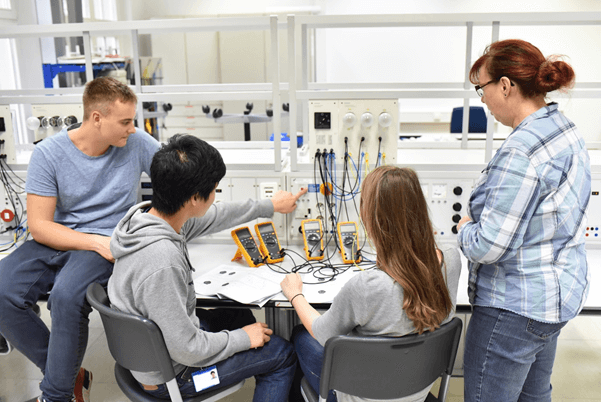Regular readers of this newsletter will know I have been banging away on this topic for a while now. Recently, the Australian industry Group has released a paper on higher apprenticeships. This is what it says.
Why higher apprenticeships?
AiG argues that they not only have to be moved to the Diploma and Advanced Diploma, but into higher education qualifications as well. Apprentice numbers have been steadily declining, and one way to broaden their appeal as a learning approach to new cohorts is to take it up a notch or two. As they point out:
“The apprenticeship model is a key platform for the delivery of workforce skills. As these skills need to be at increasingly higher levels the apprenticeship model needs to move and adapt to these challenges. Employment-based learning models such as apprenticeships are the most highly valued forms of training. Not only do these modes need to be preserved but they also need to be extended.”
The value comes from the experiences gained through learning in the workplace. And they believe the need for Industry 4.0 skills makes the argument even more compelling. Link to VDC’s article 1- In this edition of VDC News looks at Industry 4.0 a bit more deeply.
So, what are the implications?
First, higher apprenticeships offer the opportunity for some ‘boundary spanning’ between the VET and higher education sectors. For example AiG is collaborating with Swinburne University of Technology and Siemens to offer a pilot program which combines “a VET Diploma with an Associate Degree with both delivered in a work-based learning mode.” So, that’s an upside.
Another potential upside is addressing skill gaps for mid-level professional occupations as Australia moves more towards a knowledge-based economy. However, providing higher education qualifications this way is very new. It requires a greater commitment to work integrated learning than has been a tradition in Australia’s higher education system. On the other hand, VET has a long tradition of offering apprenticeships and working closely with industry and employers. This tradition is not as strong in higher education, but there is a lot higher education can learn though more open-minded approaches to collaborations with VET.
A third implication AiG points to are the inconsistencies in funding arrangements across the sectors. These inconsistencies are problematic because they work against active collaboration across the broader tertiary sector. Why? Because it means that the best attributes of VET and higher education cannot be bought together as easily as they should be.
Finally, industrial relations arrangements affect all of this too. AiG points out that:
“Given the importance of industrial awards in the provision of apprenticeships and traineeships there needs to be a process and an outcome of accommodation for programs that cross tertiary borders. Experience in Ai Group’s pilot program indicates that the new higher order skills and new occupations may not be adequately covered by current awards.”
These changes may also flow through to the employment arrangements of professional employees through their associations.
There are real opportunities here: not only for introducing apprenticeships in new fields at new levels, but also thinking about whether the changing nature of some existing apprentice-based occupations have kept pace with the AQF levels at which these apprenticeships are currently offered. Maybe now they, too, have become more complex and need to move beyond the traditional Certificate III level?
An opinion piece by Craig Fowler and John Stanwick in 2017 is worth a read. It encourages ‘boldness and ambitiousness’, especially in terms of encouraging a more integrated tertiary approach to apprenticeship offerings, linking apprentices to innovation, and creating new qualifications and reformed institutions.








